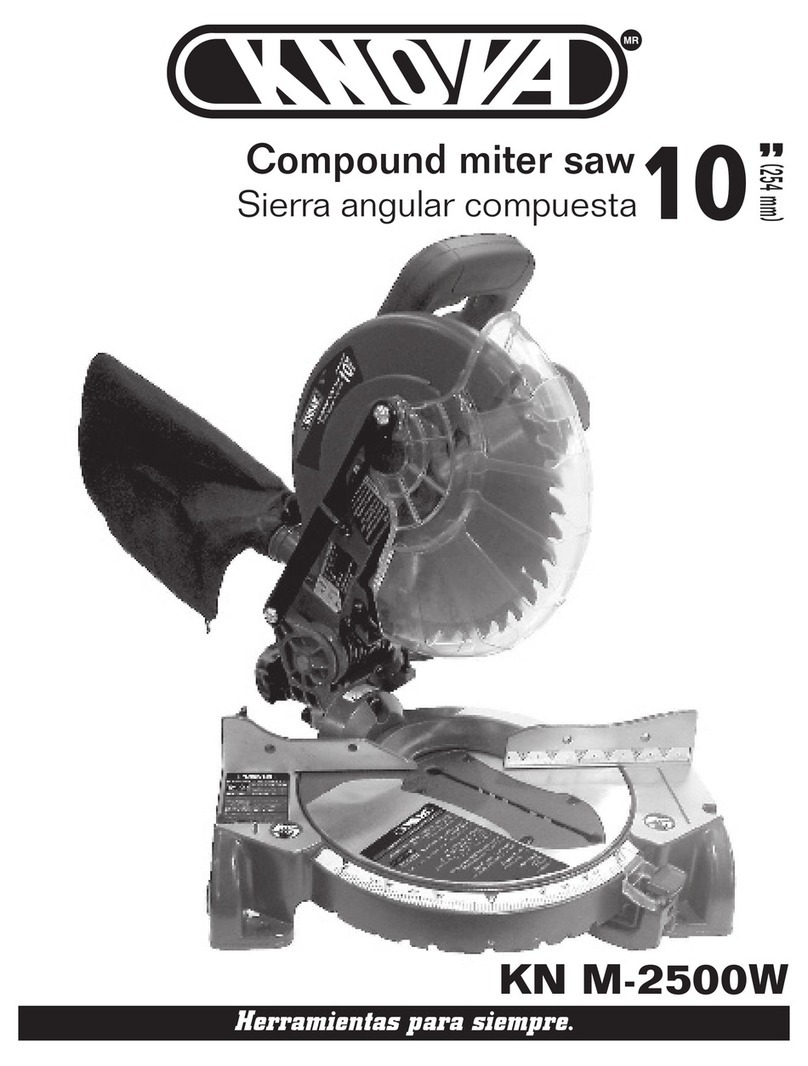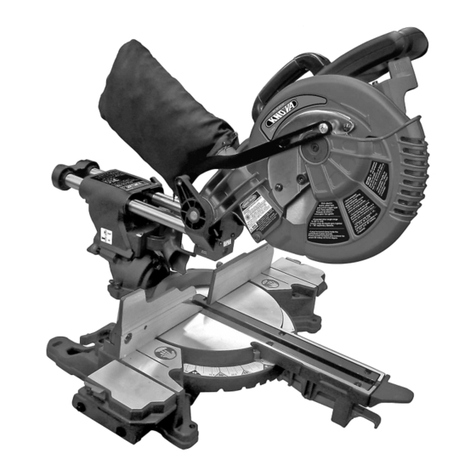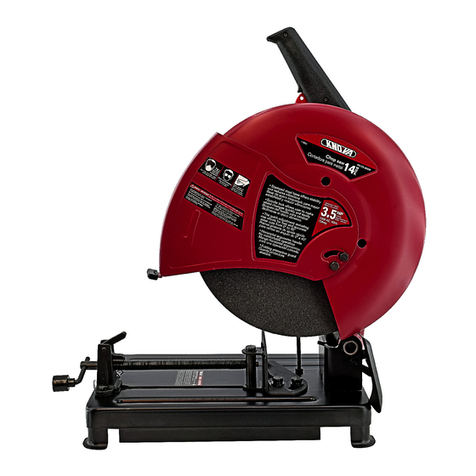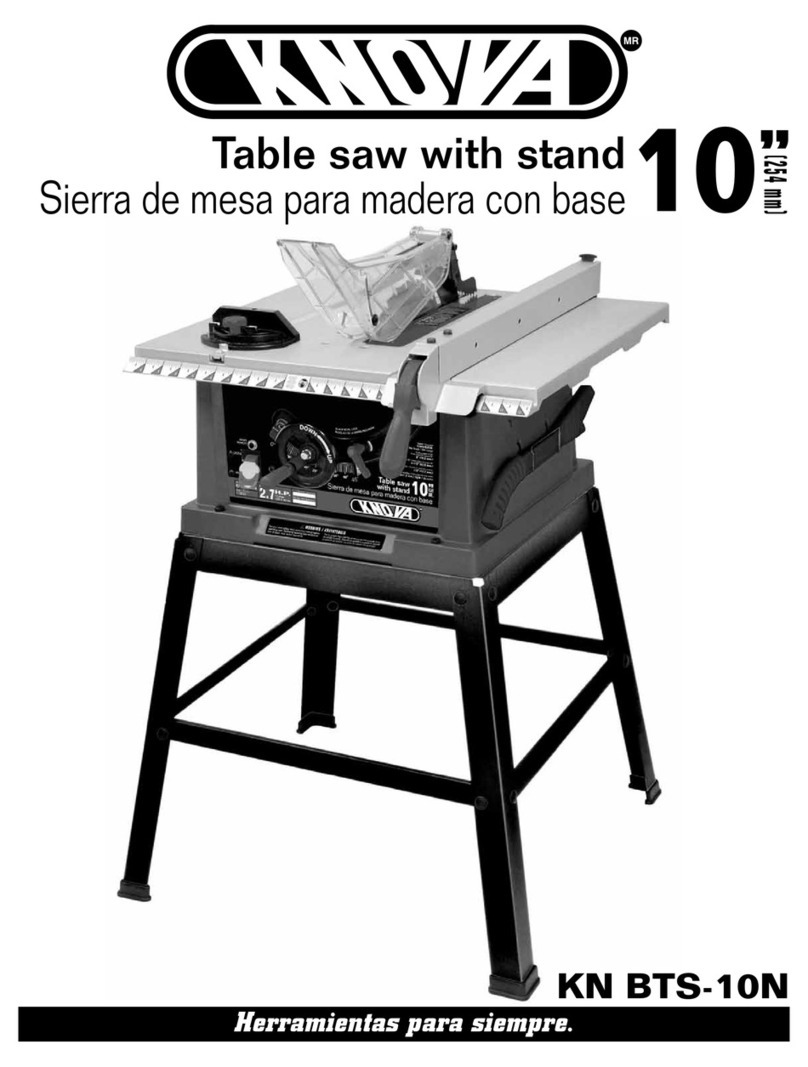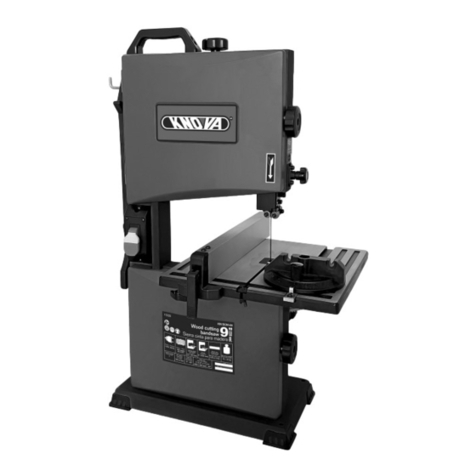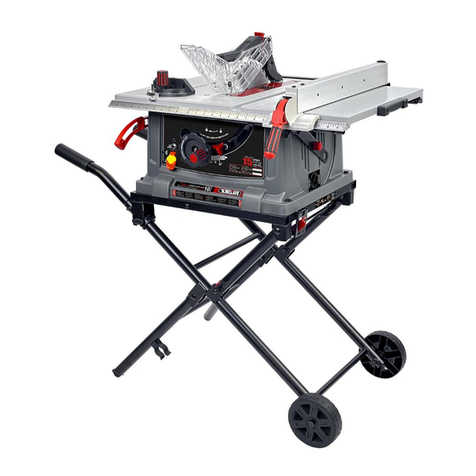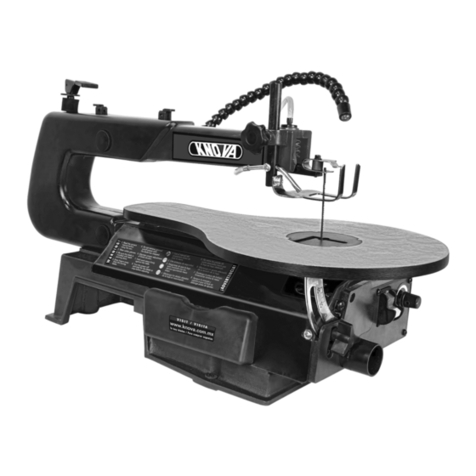
Product specications ........................................................ 1
Preface ............................................................................... 1
General safety rules for woodworking machinery............... 1
Additional safety rules for table saws ................................ 2
Assembly instruction .......................................................... 2
Electrical ............................................................................ 3
Wiring diagrams ................................................................. 4
Glossary of terms for woodworking ................................... 4
Know you machine ............................................................ 5
Assemble and adjustments ................................................ 6
Adjusting the miter gauge .................................................. 11
Assembly diagram stand .................................................... 12
Assembly diagram motor ................................................... 13
Part list of stand and motor ............................................... 14
Assembly diagram blade cover .......................................... 16
Assembly diagram miter gauga .......................................... 16
Part list of blade cover and miter gauge ............................ 17
Assembly diagram of the base .......................................... 18
Assembly diagram of the table .......................................... 19
Part list of base and table .................................................. 19
PRODUCT SPECIFICATIONS
Motor:
1-1/2 H.P. 120/240 V. 60 Hz.
Idle speed: 3,450 RPM.
Arbor size: 5/8” (15.8 mm)
Saw blade: 10” (254 mm)
TABLE OF CONTENTS
1
PREFACE
Thank you for choosing this tilting arbor table saw. We are pleased to offer you our best machinery and service, and trust that you will nd
our machinery economical, productive and easy to operate.
This manual covers the proper operation, safety and maintenance of the machine. It is important that this manual be read in its entirety
before operating the machine. Although the machine has been checked and inspected in compliance with relevant safety regulations, the
machine’s safety and best performance are dependent on proper maintenance and operation. Hazards that arise due to improper operation
and maintenance are solely the responsibility of the operator.
We thank you again for you choice, and for your careful reading of this manual.
GENERAL SAFETY RULES FOR WOODWORKING MACHINERY
There is a certain amount of hazard involved with the use of woodworking machinery. Using the machine with the respect and
caution demanded as far as safety precautions are concerned will considerably lessen the possibility of personal injury.
However, if normal safety precautions are overlooked or ignored, several personal injury to the operator can occur. If you have
any questions relative to its application DO NOT use the tool until you have read what we have advised you.
1. KNOW YOUR POWER TOOL. Read the owner’s manual
carefully. Learn the tools applications and limitations,
as well as the specic potential hazards peculiar to it.
2. KEEP GUARDS IN PLACE and in working order.
3. GROUND ALL TOOLS. If tool is equipped with
three-prong plug. It should be plugged into a three-pole
electrical receptacle. If an adapter is used to
accommodate a two-prong receptacle, the adapter lug
must be attached to known ground. Never remove
the third prong.
4. REMOVE ADJUSTING KEYS AND WRENCHES. Form
habit of checking, to see that keys and adjusting
wrenches are removed from tool before turning it on.
5. KEEP WORK AREA CLEAN. Cluttered areas and
benches invite accidents.
6. AVOID DANGEROUS ENVIRONMENT. Don’t use
power tools in damp or wet locations, or expose them to
rain. Keep work area well lighted.
7. KEEP CHILDREN AND VISITORS AWAY. All children
and visitors should be kept a safe distance from
work area.
All specication, dimensions and design characteristics shown in this catalogue are subject to change without notice.
Max. depth of cut at 90º:
3/18” (79 mm)
Max. depth of cut at 45º:
2-1/5” (56.25 mm)
Saw blade tilt left: 0º - 45º
Table size: 20-1/8” x 27”
MODEL KN RXW-10M3
8. MAKE WORKSHOP KID PROOF with padlocks, master
switch, or by removing starter keys.
9. DON’T FORCE TOOL. It will do the job better and be
safer at the rate for which it was designed.
10. USE RIGHT TOOL. Don’t force tool or attachment to do
a job for which it was not designed.
11. WEAR PROPER APPAREL. No loose clothing, gloves,
neckties, rings, bracelets, or jewelry to get caught in
moving parts. Non-slip footwear is recommended. Wear
protective hair covering to contain long hair.
12. ALWAYS USE SAFETY GLASSES. Also use face or dust
mask if cutting operation is dusty. Everyday eyeglasses
only have impact resistant lenses, they are NOT safety
glasses.
13. SECURE WORK. Use clamps or a vise to hold work,
when practical. It’s safer than using your hand and frees
both hands to operate tool.
14. DON’T OVERREACH. Keep your proper footing and
balance at all times.
Miter gauge left & right:
30º
Fence size: 36” x 1-3/4” x 2-5/8”
Overal dimensions:
49-3/4” x 41-3/4” x 38-1/8”
Net/gross weight: 103 / 114 Kg.

